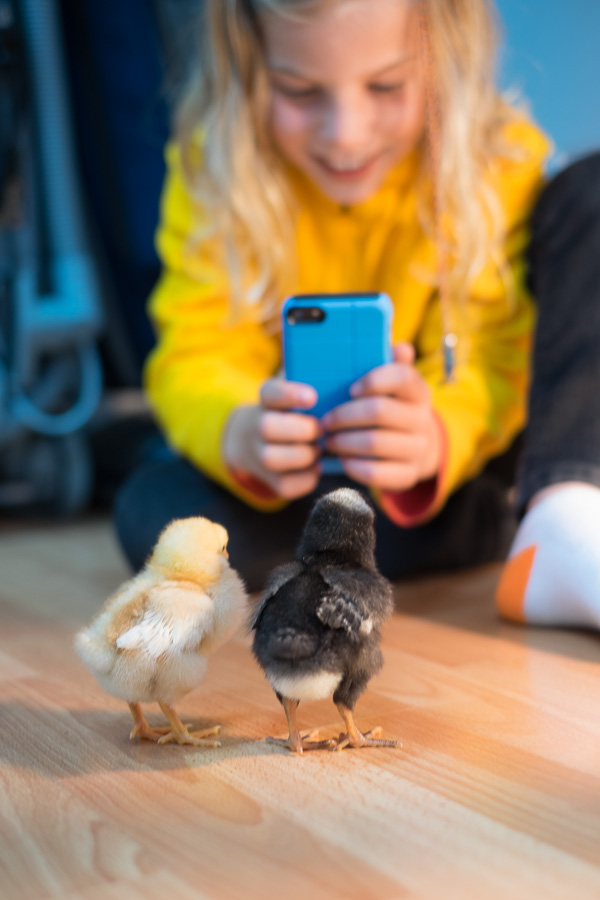Eggs In Our Future
Recently we joined the increasing ranks of people that own chickens for fun, well, and eggs. A little more than 3 weeks ago the local post office called early in the morning to say that our 4 chicks had arrived boxed, chirping and ready for pick-up. For those not in the know, chick's can live for 3 days on the yolk reserve in their body after hatching from the egg before they need other food. Our chicks had a short overnight trip from Meyer Hatchery in Polk, Ohio and arrived healthy puff balls of down ready for the homemade, kid-decorated brooder.
The kids quickly claimed a chick as their own leaving their cast-off as mine and my wife’s.
[1]
We were forewarned not to name the chicks, not to think of them as pets
[2]
if we planned on slaughtering them later (“Go ahead and try to kill Daisy.” I was told by a friend). I can only assume those people didn’t have young children or they would have known the impossibility of that advice.
After chicks are in the brooder there is little else needed to maintain them: fresh water, warm temperatures, plenty of food, caution for
pasty butt
, and interact with them to be sure they are comfortable when handled by people.
[3]
Beyond those few requirements you simply watch them grow. And they grow quickly. It was only a week-and-a-half before the down on their wings was nearly fully replaced by true feathers. Tail feathers quickly followed. They haven’t fully molted into their adult colorations yet, but the kids are excitedly watching the birds’ gradual color change into maturity.
Where to end the story I wanted to share of chickens that we plan on having for years? Their initiation into the outdoor coop seemed like as good a development as any. The equivalent of chick high school graduation. Weeks before the chicks arrival we began building a mobile chicken coop (which as it came together quickly became heavy enough to be borderline immobile) and then it sat waiting for occupants. As the weather warmed into May we began to bring the chicks outside during the day, penning them in a small enclosure, and returning them to the brooder inside at night. But as the chicks quickly grew it became obivious that the brooder was size limited and we moved them out to the mobile coop permanently a few days ago. The coop dwarfs them at this age, but they took to it rather quickly and will easily grow into it with room to spare. We are months away from collecting eggs, but our youngest is greatly anticipating collecting eggs from her chicken (named Sunshine I think) and hardboiling them. Until then the birds will be living a fine life roaming around the yard munching greens and bugs, mooching and relaxing until they begin to give back.
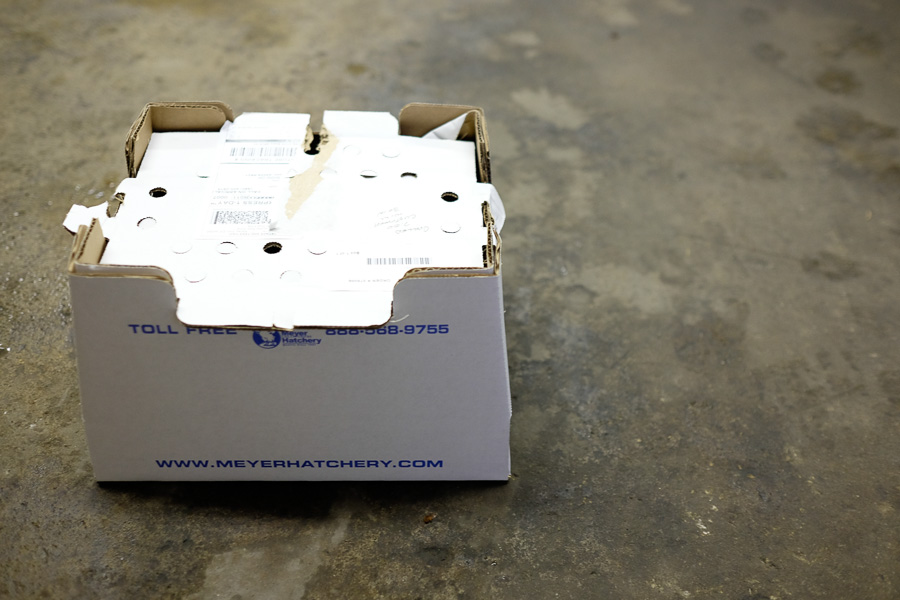
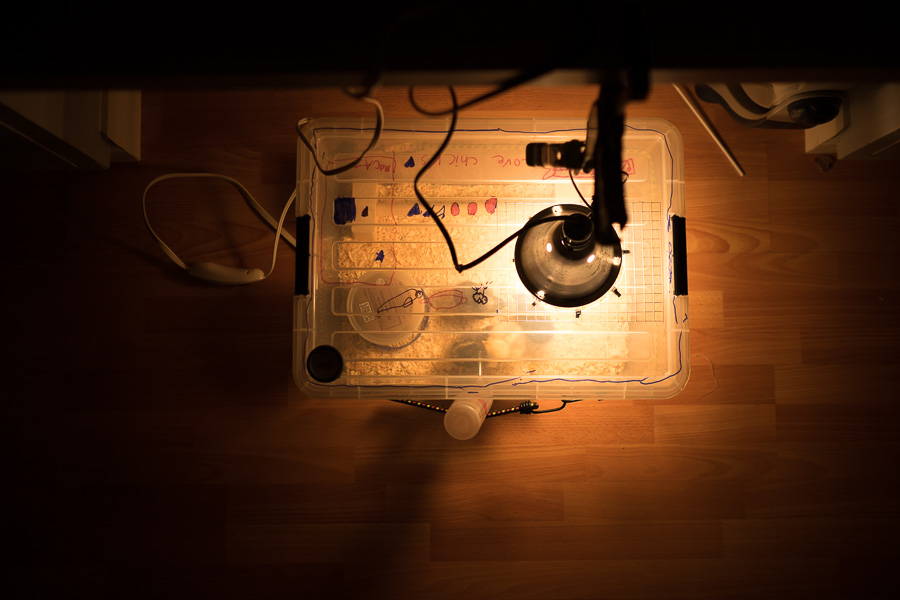
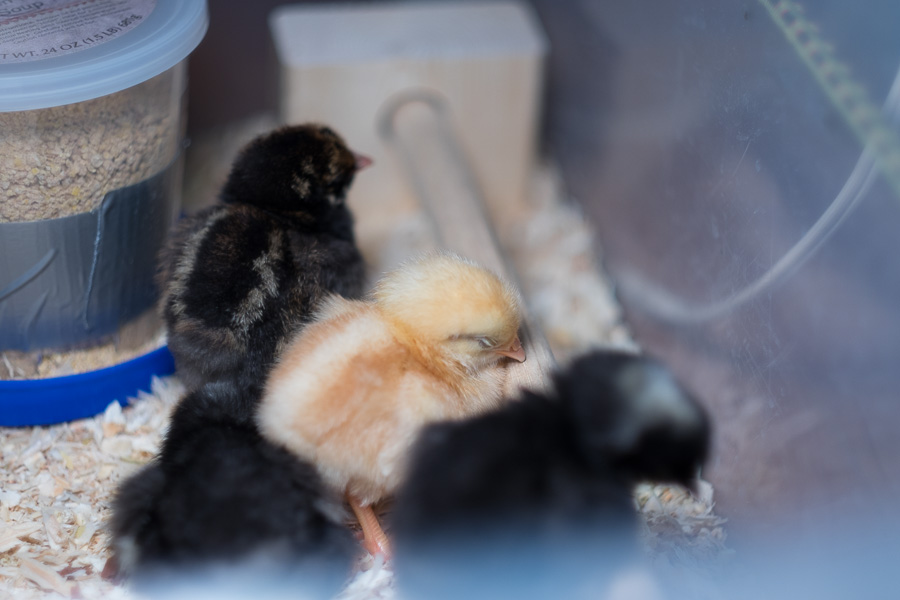
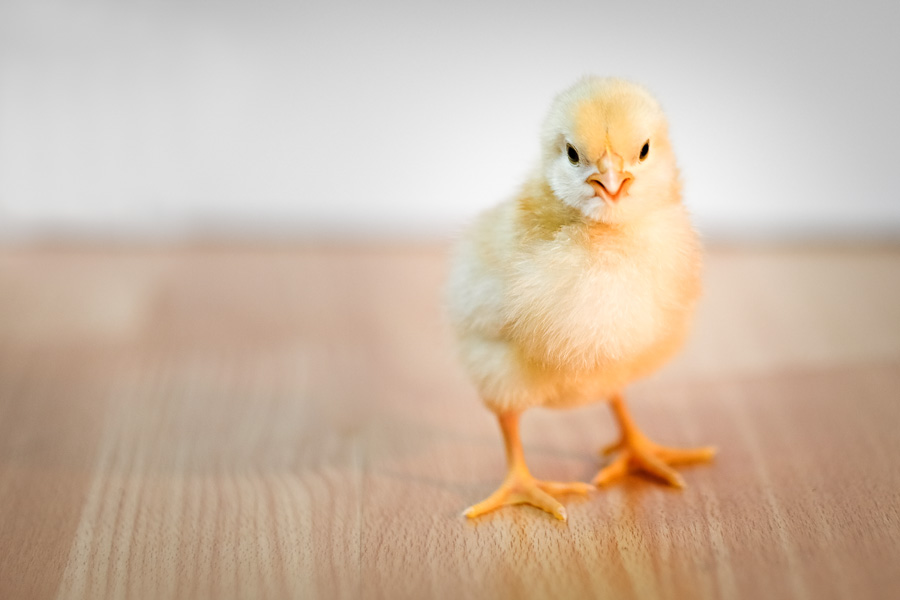
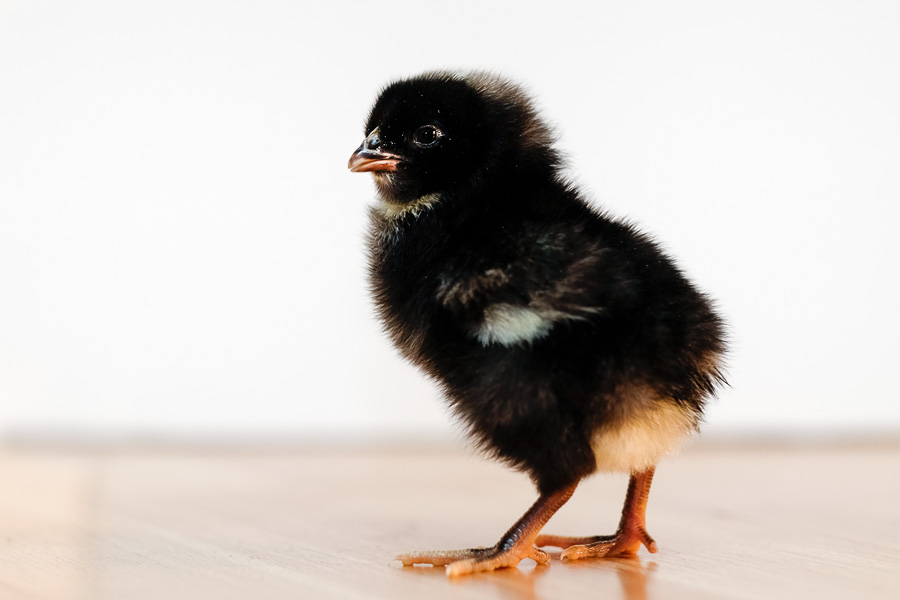
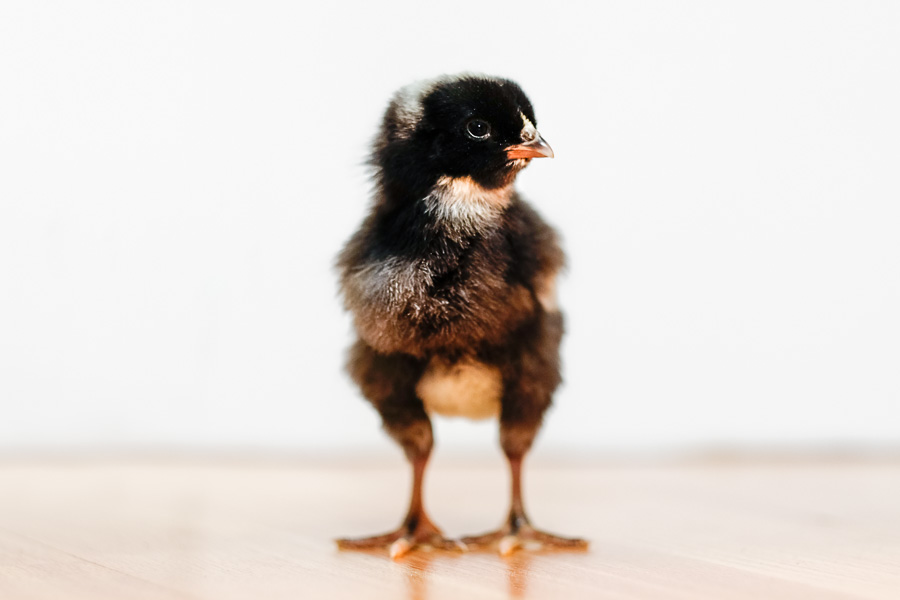
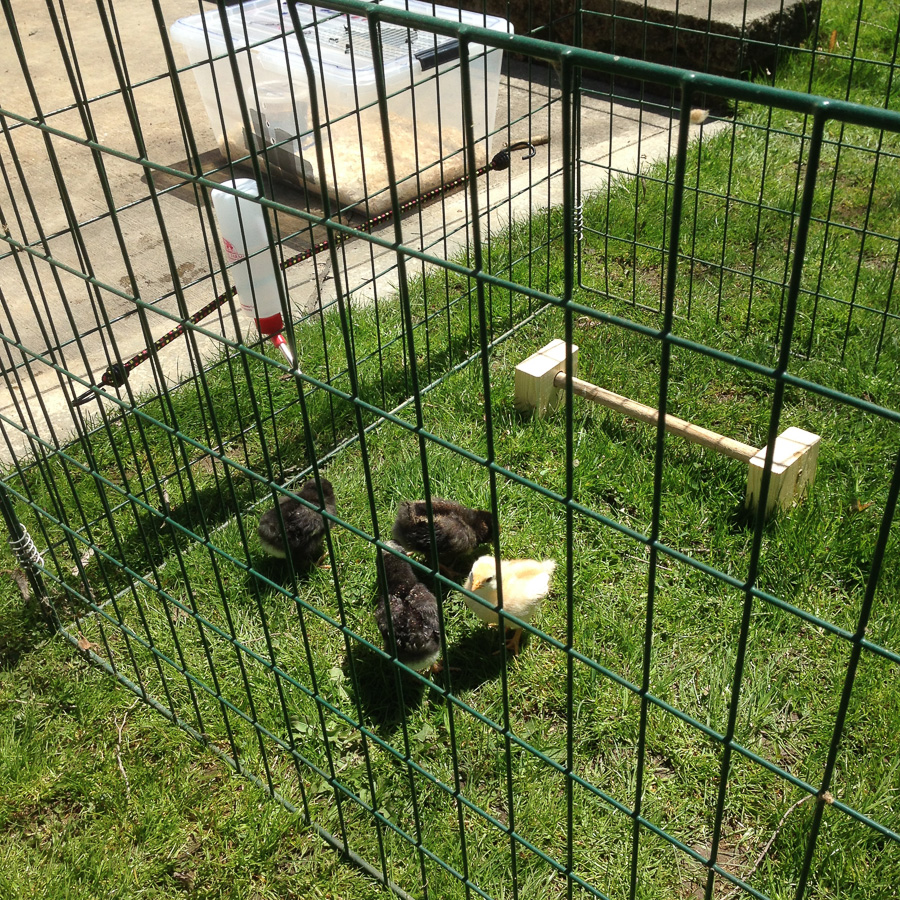
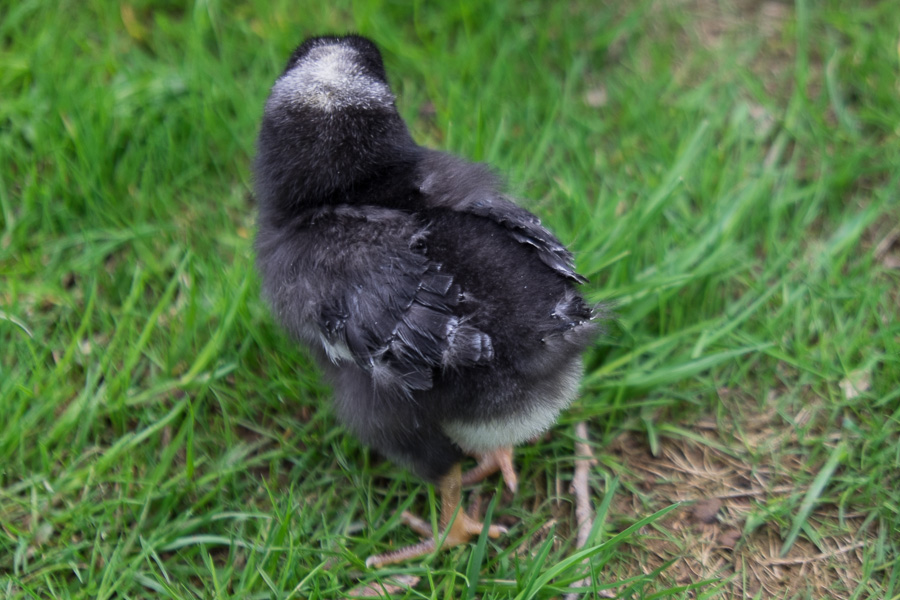
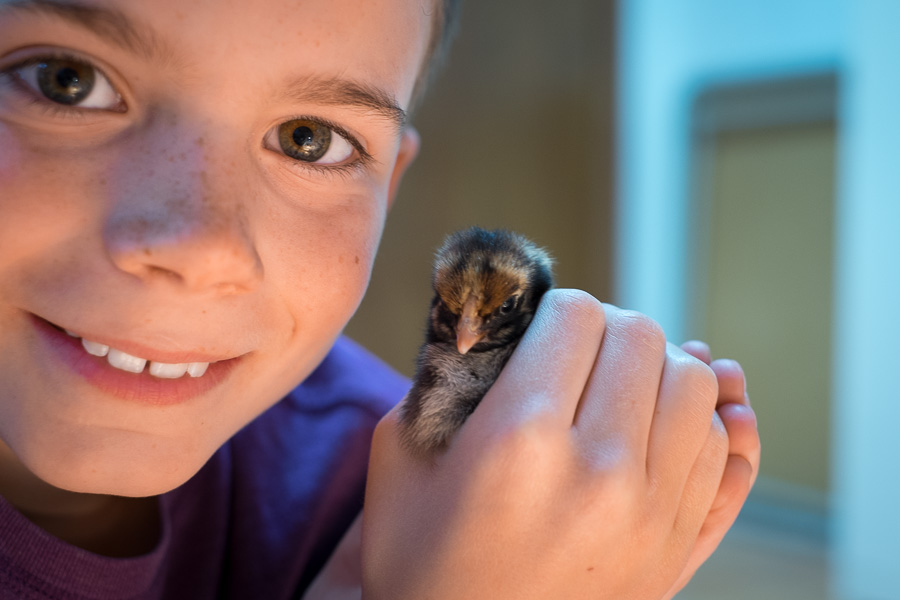
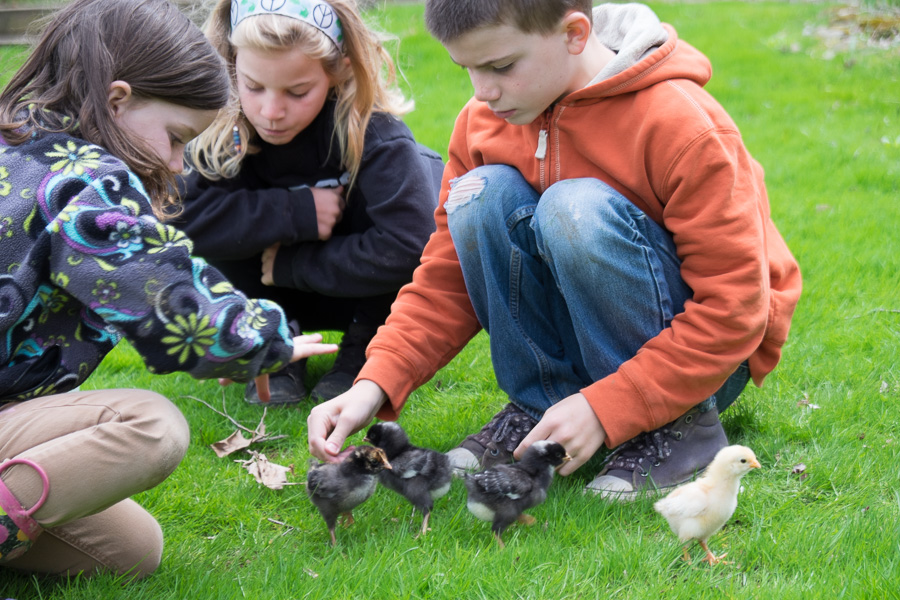
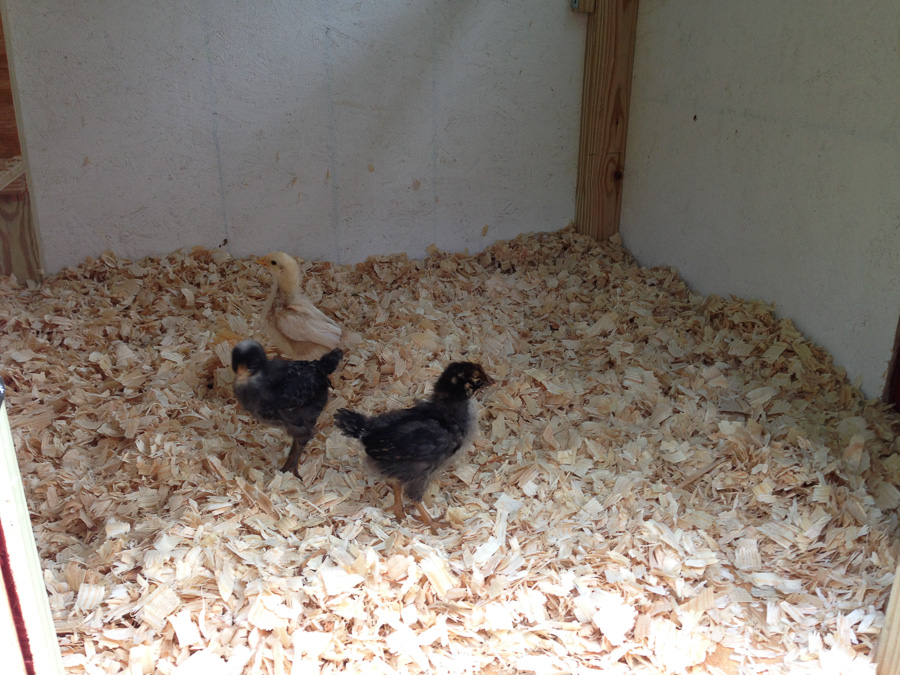
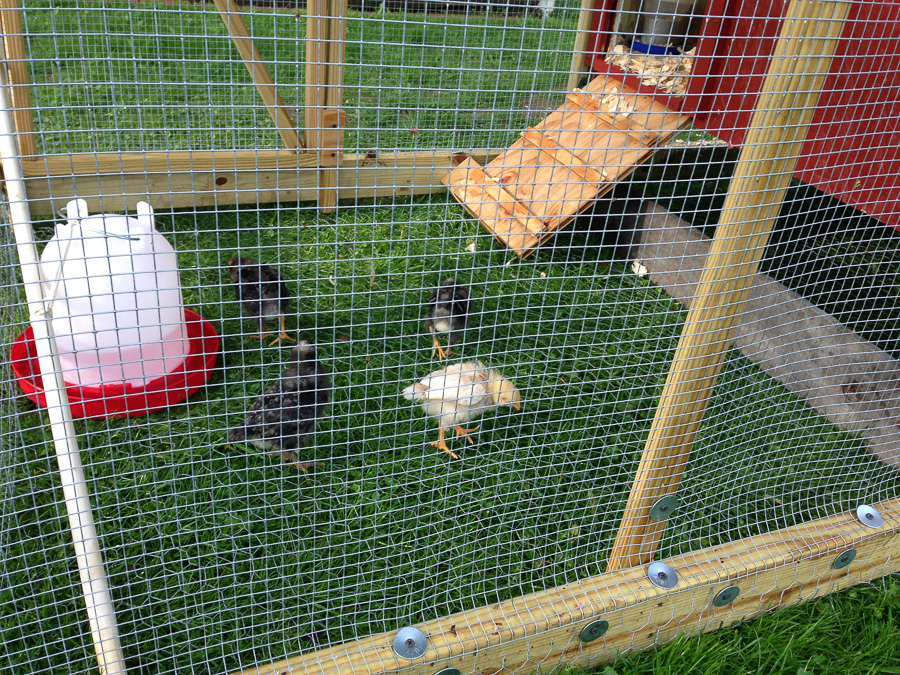

-
Oddly this chick became the runt and was noticeable slower in maturing and loosing its down. Some sixth sense for species survival in my kids? ↩
-
To be honest, while this will be a controversial view with some, I view the chicks as production animals more than pets. Watching my kids interact with the birds they, unsurprisingly, see it differently at this point. Yes, that could be a problem in a few years when the birds have slowed their egg laying and I begin to consider them for chicken stock material, but I will confront that then. Too many kids are growing up disconnected with where their food comes from and how it reaches their plates. They may fill the role of pets in the end, but I hope to teach my kids that there are pets with a purpose. I hope to teach them good animal stewardship, raising animals humanely and ethically, and, for the same reason we have a garden, to teach them to have a personal investment in and knowledge of the food they eat. ↩
-
We did pick breeds bred for their docility and lack of brooding (egg protection) to help ensure that we had kid-friendly chickens. ↩

